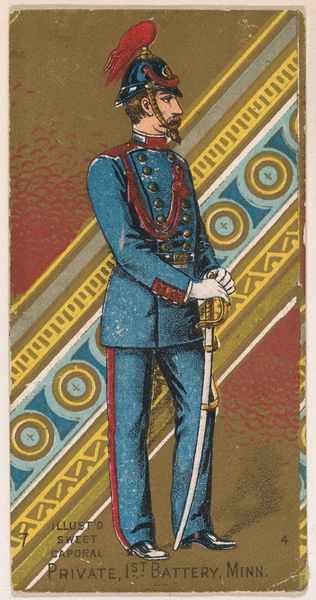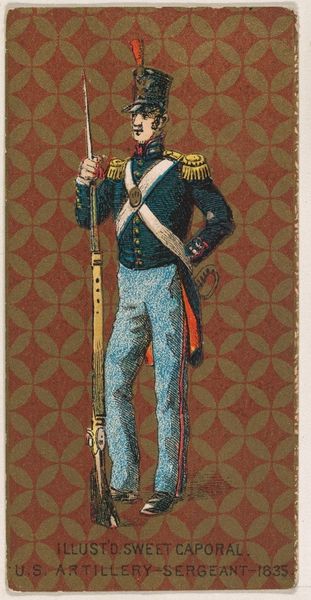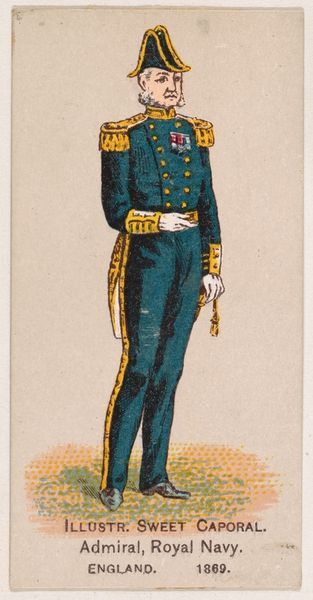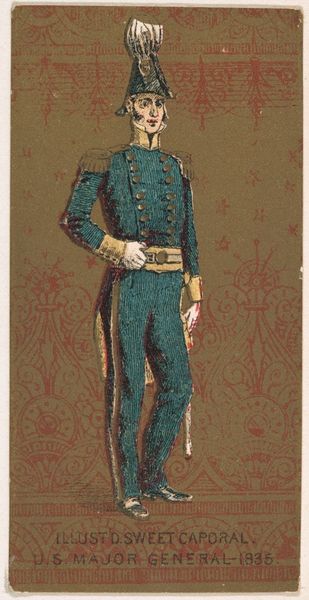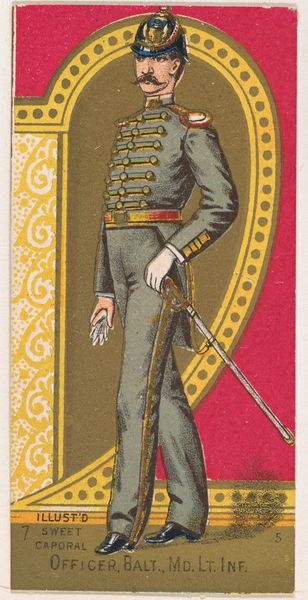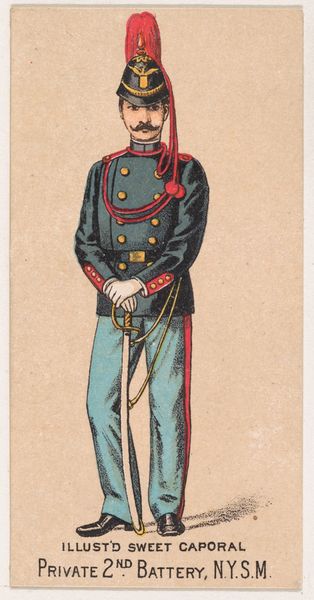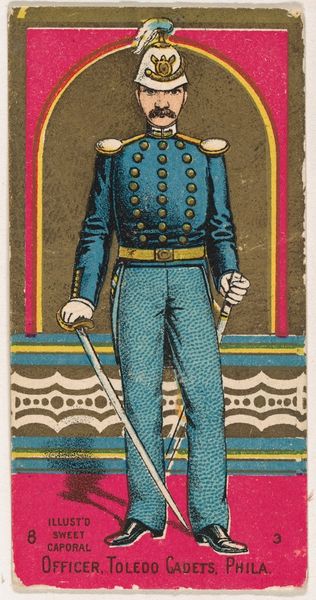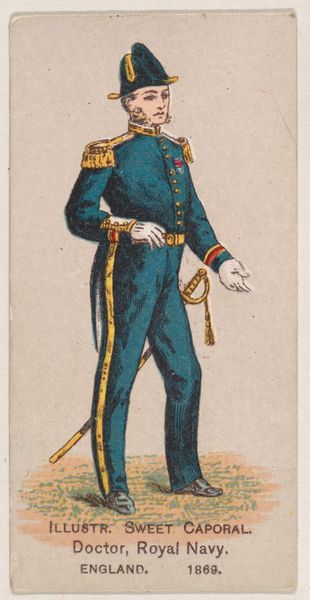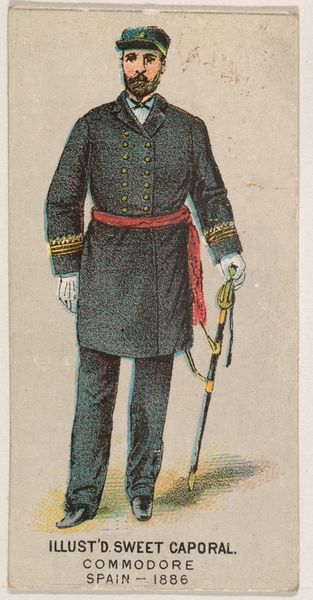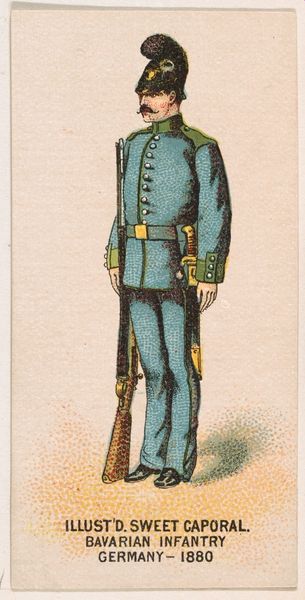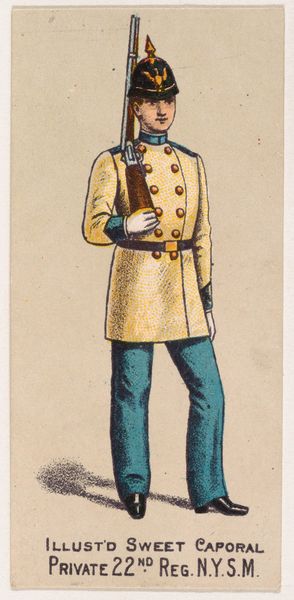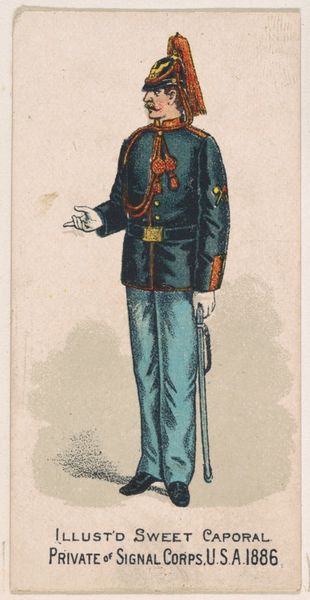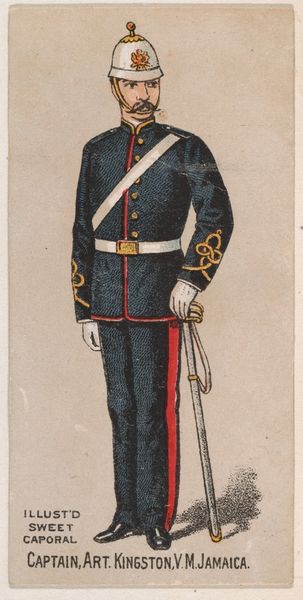
Lieutenant, Light Artillery, United States Army, 1812, from the Military Series (N224) issued by Kinney Tobacco Company to promote Sweet Caporal Cigarettes 1888
0:00
0:00
drawing, print
#
portrait
#
drawing
# print
#
folk art
#
men
#
watercolour illustration
#
genre-painting
#
history-painting
#
academic-art
#
decorative-art
#
decorative art
#
watercolor
Dimensions: Sheet: 2 3/4 × 1 1/2 in. (7 × 3.8 cm)
Copyright: Public Domain
Curator: This watercolor print from 1888, entitled "Lieutenant, Light Artillery, United States Army, 1812," was part of a series issued by the Kinney Tobacco Company to promote Sweet Caporal Cigarettes. What strikes you first about this small piece? Editor: The texture! I mean, the surface appears surprisingly smooth despite its origins in a tobacco advertisement. I’m curious about the printing process, given its mass-produced function versus what appears like delicate watercolor. Curator: Right, consider its function. The military uniform itself is a powerful symbol of authority and nationhood, standardized and laden with cultural meaning. Notice the details – the meticulously rendered buttons and epaulettes, which all convey hierarchy and order. It is interesting that the uniform is accurately depicted, a sign of attention to detail for a piece intended for wide circulation. Editor: I wonder, though, about the materiality of that "accuracy." Uniforms were not only symbols, they were made, distributed, worn. This idealized image flattens the messy realities of textile production and military life onto a small, collectible card. What were these uniforms actually like, the ones soldiers wore daily? I see how these kinds of objects are often at the expense of other social facts of the time. Curator: Absolutely, the image serves as a window into the symbolic language of late 19th-century patriotism and consumerism. Consider how the inclusion of "1812" in the title connects this image to a specific historical narrative, one that would have resonated with Americans at the time. Also note that this is during the decorative art movement when it was believed mass-produced things could and should be well designed and beautiful for all, not just wealthy, homes. Editor: And while it does give that impression, its purpose betrays it somewhat. While designed with detail, it was likely a disposable commodity in that day, highlighting a tension between artistic intention and material reality, between design and marketing, high culture and ephemera. Curator: Thinking about this work has me contemplating how even the most seemingly simple images carry intricate cultural and historical meanings, influencing and reflecting societal values. Editor: It’s a great case study on how accessible artworks can offer a wealth of insight into social production and our consumer habits in the past.
Comments
No comments
Be the first to comment and join the conversation on the ultimate creative platform.

